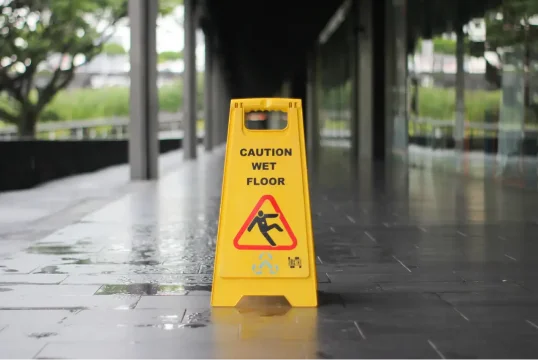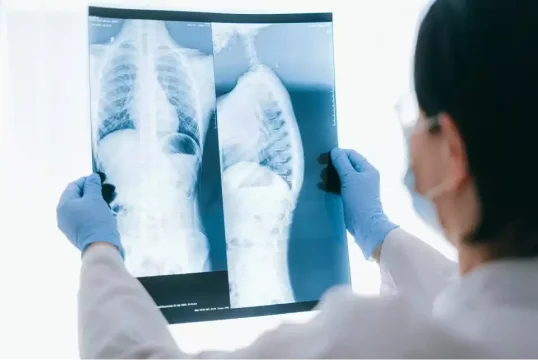Silica dust exposure is one of the most dangerous workplace conditions to occur in the construction and industrial sector due to the lasting effects of mineral particles found in silica dust. As the dust has a low solubility, the particles will forever remain in a person’s lungs and depending on how often you are exposed to silica dust, you can potentially develop silicosis and suffer all of the associated health complications that comes along with it such as respiratory failure and even death.
Due to its frequent usage in quartz countertops, construction, home remodeling, and ceramic manufacturing, silica dust exposure is a rising risk in many workplace environments and if proper care and safety measures are not taken it can result in a deadly lung disease that cannot be cured. If you or a loved one has been diagnosed with silicosis due to the negligent or reckless actions of another party, then you may be eligible to recover compensation for your damages.
At West Coast Trial Lawyers, our team of attorneys are ready to take on your case and fight for you. We are a law firm with over 20 years of legal experience and our dedicated team of attorneys understand how silicosis can dramatically alter a person’s life and, as a result of their dedication and compassion, they are confident that they can get you the maximum compensation you deserve for your losses.
We have recovered over $1.6 billion in financial compensation to our clients and we will continue to do our duty to guide you throughout the legal process and look out for your best interests. As silica dust exposure cases can take a huge emotional and physical toll on a person’s body, it can be overwhelming trying to understand every development that has occurred throughout a case. Which is why you should have any questions or concerns regarding your case, our compassionate team of attorneys is available 24/7 to address them in full detail.
We run on a contingency-fee basis, meaning you pay no fees until you win. To schedule a FREE consultation, you can get in touch with us by calling us at (213) 927-3700 or by filling out our quick online contact form.

What is Silicosis
Silicosis is a chronic lung disease caused by inhaling crystalline silica dust over a period of time. The dust itself can be found in many types of minerals, rocks, clay, dirt, and artificial stone. According to the American Lung Association, about 2.3 million workers are diagnosed with silicosis and depending on the source of the material, the concentration, infection rate, and severity will vary on a case-by-case scenario.
Most silica dust exposure cases are found in construction work, ceramics manufacturing, and countertop fabrication, which is why it is important for construction and mineral manufacturers to wear heavy duty masks to prevent silicosis from developing. Should you become diagnosed with silicosis, you may face chronic conditions with long-term health complications, and in some of the most severe cases, it can be fatal.
Stages of Silicosis
Silicosis can be broken down into three different stages, chronic, accelerated, and acute. Each stage is going to be dependent on your level of exposure, current health conditions, and lifestyle. For instance, if you smoke cigarettes frequently, you increase the chances of developing a more severe stage of silicosis and potentially add additional damage and chronic health conditions onto your lungs. Should you choose to file for a silicosis exposure claim with an attorney, it is important to understand the different stages to serve as a point of reference.
Chronic
Chronic silicosis is the mildest stage of silica dust exposure and stands as the most common form out of the three. As chronic silicosis typically develops after 10 to 30 years of low-level silica dust exposure, the damage it causes tends to be minimal such as inflammation and scarring in the lungs. In some cases, chronic silicosis may be asymptomatic, however, it is important to note that the condition is irreversible and those diagnosed with it should focus on maintaining a healthy lifestyle to slow down the progression.
Accelerated
Accelerated silicosis is when a person experiences moderate levels of silica dust exposure and, as a result, they show more advanced symptoms of silicosis. While accelerated silicosis is not as severe as acute silicosis, there is more significant damage in the lungs and those exposed are more likely to develop other respiratory conditions such as tuberculosis and chronic obstructive pulmonary disease.
Acute
Acute silicosis is the most advanced form of silicosis where the silica dust has caused extensive inflammation and scarring in the lungs. Due to the widespread scarring in the lungs, those with acute silicosis will exhibit a number of symptoms and will develop additional health complications such as respiratory failure. As such, acute silicosis is fatal and can drastically shorten a person’s lifespan especially if they do not receive the proper care and treatment they need.
How Much Silica Dust Causes Silicosis?
While the amount of silica dust that is needed to cause silicosis is dependent on a variety of factors, there is no exact threshold of exposure that guarantees immunity due to the mineral composition of silica dust. However, a good rule of thumb to note is that the higher the concentration and duration, the more likely you will develop acute silicosis and other respiratory illnesses. With that in mind, it is vital that you wear industrial grade masks and additional facial coverings to reduce the chances of inhaling any silica dust.
Symptoms of Silicosis
Early Symptoms of Silicosis
Identifying the early symptoms of silicosis can be challenging, as they often resemble those of other respiratory conditions. However, early detection is vital for preventing the disease from progressing to more severe stages. Some of the early symptoms include:
- Persistent Cough: A chronic cough that doesn’t seem to go away is one of the earliest signs of silicosis. The cough may be dry and it may worsen as the disease progresses.
- Shortness of Breath: Difficulty breathing, especially during physical activity, is another early symptom. As silicosis progresses, shortness of breath can occur even when a person is resting.
- Chest Pain: Some individuals may experience chest pain or discomfort, particularly when coughing or taking deep breaths. This symptom can indicate inflammation and scarring in the lung tissues.
- Fatigue: Feeling unusually tired or fatigued is a common symptom, as the body struggles to get enough oxygen due to reduced lung function.
Advanced Symptoms of Silicosis
As silicosis progresses, the symptoms become more severe and debilitating. Advanced symptoms of silicosis include:
- Severe Shortness of Breath: Breathing becomes increasingly difficult as lung function deteriorates. This can significantly impact the individual’s ability to perform daily activities.
- Chronic Cough with Phlegm: The persistent cough may become more prevalent, with thick mucus or phlegm. In some cases, the phlegm may contain blood.
- Loss of Appetite and Weight Loss: As the disease advances, individuals may lose their appetite, leading to unintended weight loss and weakness.
- Fever and Night Sweats: Some individuals with advanced silicosis may experience recurrent fevers and night sweats, which can be indicative of an underlying respiratory infection or tuberculosis (TB), a common complication of silicosis.
- Cyanosis: This refers to a bluish tint of the skin and lips, indicating that the blood is not receiving enough oxygen. Cyanosis is a sign of severe respiratory distress and requires immediate medical attention.
- Swelling in the Legs: Swelling in the legs and feet, also known as edema, can occur due to the strain on the heart and lungs caused by silicosis. This is often a sign of right-sided heart failure (cor pulmonale), a serious complication of advanced silicosis.
Complications Associated with Silicosis
Silicosis is not just a lung disease; it can serve as a gateway and lead to other serious health complications, further emphasizing the importance of early detection and management.
Tuberculosis (TB)
Individuals with silicosis are at a significantly higher risk of developing tuberculosis (TB). The silica particles damage the lung tissue and make it more susceptible to TB bacteria. Due to the nature of TB in individuals with silicosis, it can be more difficult to treat and can lead to severe complications and a drop in quality of life.
Chronic Obstructive Pulmonary Disease (COPD)
Silicosis can contribute to the development of chronic obstructive pulmonary disease (COPD), a group of lung conditions that includes chronic bronchitis and emphysema. COPD causes long-term breathing problems and poor airflow, significantly impacting the quality of life.
Lung Cancer
Long-term exposure to silica dust has been linked to an increased risk of lung cancer. Silica has been classified as a human carcinogen by the International Agency for Research on Cancer (IARC), further highlighting the need for preventive measures in high-risk occupations.
Kidney Disease
There is also evidence suggesting a link between silica exposure and kidney disease. Silicosis can lead to the formation of kidney stones and increase the risk of developing chronic kidney disease (CKD).
What Job Occupations Are at High Risk?
Job occupations that involve drilling, cutting, or grinding natural materials and artificial stones can expose you to silica dust. Some high-risk positions include:
- Construction workers
- Stone countertop fabrication
- Foundry work
- Ceramics manufacturing
- Mining and hydraulic fracturing
Under the Cal/OSHA Silica Emergency Temporary Standard, the employers must enforce the prevention methods to protect workers from silica inhalation. Some of the most common and effective practices include the following:
- Perform high-risk tasks in designated areas that are clearly marked with warning signs.
- Implement effective housekeeping and hygiene practices by only using wet methods or high-efficiency (HEPA) vacuums.
- Respirators must be properly worn and washing facilities should be available to use.
- Shave off facial hair to ensure protective gear is tight-fitting.
- Have disposable or washable clothing available at the worksite to prevent dust from traveling to homes or vehicles.
- Do not use compressed air, dry sweeping, or shoveling to clean surfaces.
Quartz Industry Workers: At the Forefront of Risk
Workers in the quartz industry are particularly vulnerable to silicosis due to the nature of their work. The cutting, grinding, and polishing of quartz generate a significant amount of silica dust, which, if not properly controlled, can easily be inhaled. The risk is especially high in industries where safety regulations are lax or where protective equipment is not adequately provided or used.
Most Common Occupational Hazards in the Quartz Industry
- Stone Countertop Fabrication: Workers who fabricate quartz countertops are at high risk as they often work in enclosed spaces with poor ventilation. The dust generated from cutting and polishing these countertops can reach dangerously high levels.
- Mining and Quarrying: Those involved in the extraction of quartz from the earth are also at risk. The process of blasting, crushing, and transporting quartz-rich rocks releases silica dust into the air.
- Construction: Workers in the construction industry who use materials containing quartz, such as concrete and brick, are also exposed. Activities such as drilling, sawing, and sanding these materials can release significant amounts of silica dust.
Can I File A Claim If I’ve Been Diagnosed With Silicosis (Silica/Silicosis Claims)
If you’ve been diagnosed with silicosis, you may be eligible to file a claim against your employer or other responsible parties. Eligibility criteria typically include:
- Proof of Exposure: You must demonstrate that you were exposed to silica dust in the workplace. This often involves providing evidence of your work history and the conditions under which you were exposed.
- Medical Diagnosis: A formal diagnosis from a qualified healthcare professional is essential. This diagnosis should clearly link your condition to silica exposure.
- Statute of Limitations: Claims must be filed within a certain time frame, which varies by jurisdiction. It’s important to act quickly to ensure your claim is not barred by time limits.
- Employer Responsibility: If your employer failed to provide adequate protective measures or comply with safety regulations, they might be held liable for your condition.
Steps to Filing a Silicosis Claim
1. Seek Legal Advice
The first step in filing a silicosis claim is to consult with an experienced personal injury or workers’ compensation attorney who specializes in occupational diseases. They can assess the merits of your case, guide you through the legal process, and help you understand your rights.
2. Gather Documentation
Collect all relevant documents, including your medical records, employment history, and any documentation of safety violations at your workplace. These will be crucial in building a strong case.
3. File the Claim
Your attorney will help you file a claim with the appropriate court or workers’ compensation board. This may involve submitting detailed information about your diagnosis, exposure, and the impact of silicosis on your life.
4. Prepare for Litigation
In some cases, employers or insurance companies may dispute your claim, leading to litigation. Your attorney will represent you in court, presenting evidence to support your case and negotiating on your behalf.
5. Receive Compensation
If your claim is successful, you may be awarded compensation for medical expenses, lost wages, pain and suffering, and other damages. The total amount will depend on the severity of your condition and the impact it has had on your quality of life.
Types of Compensation Available for Silicosis Claims
1. Medical Expenses
Silicosis can lead to substantial medical costs, including ongoing treatment, medication, and specialist consultations. Compensation can cover both current and future medical expenses related to your condition.
2. Lost Wages
If silicosis has affected your ability to work, you may be entitled to compensation for lost wages. This can include past lost income and, in cases where the condition prevents you from returning to work, future earnings.
3. Pain and Suffering
Silicosis can cause significant physical and emotional distress. Compensation for pain and suffering aims to address the non-economic impact of the disease, including reduced quality of life.
4. Disability Benefits
In severe cases, silicosis may result in permanent disability. You may be eligible for disability benefits, which provide ongoing financial support for individuals unable to work due to their condition.
Employer Liability in Silicosis Cases
Employers have a legal obligation to provide a safe working environment and protect employees from hazardous conditions. If your employer failed to implement adequate safety measures, such as providing respiratory protection or ensuring proper ventilation, they could be held liable for your silicosis diagnosis.
In many cases, employers are required to adhere to Occupational Safety and Health Administration (OSHA) regulations, which mandate specific safeguards against silica exposure. Failure to comply with these regulations can strengthen your claim and increase the likelihood of receiving compensation.
West Coast Trial Lawyers is Here to Help
If you or a loved one has been exposed to silica dust due to negligent and reckless workplace conditions, you may be eligible to recover compensation for your damages. As silicosis is a permanent life long disease that can potentially cut your lifespan down to several months, it is vital that you seek legal representation, so you are properly compensated and ensure that the responsible party is held liable for their actions.
At West Coast Trial Lawyers, our team of attorneys are ready to take on your case and serve as your personal legal representative in this endeavor. We are a law firm with over 20 years of legal experience and our compassionate team of attorneys understand the lasting effects of silicosis and how devastating it can be on a person and on their family. As a result of their dedication and extensive knowledge of the law, they are confident that they can get you the maximum compensation you deserve for your losses.
We have recovered over $1.6 billion in financial compensation to our deserving clients and we will continue to do our duty to fight for your rights and hold the liable party responsible for their actions. As silica dust exposure claims can be difficult to file and process on your own, our team of attorneys will be there every step of the way and will answer any questions or concerns you have regarding your case.
We run on a contingency-fee basis, meaning you pay no fees until you win. To schedule a FREE consultation, you can get in touch with us by calling us at (213) 927-3700 or by filling out our quick online contact form.
Most Frequently Asked Questions About Silicosis
What Is the Difference Between Asbestosis and Silicosis?
Asbestosis is a chronic lung disease caused by inhaling asbestos fibers. Being exposed to this hazardous substance for an extended period of time can lead to the scarring of lung tissue. Other health problems you may develop include:
- Shortness of breath
- Chest tightness
- Coughing
These reactions can range from mild to severe, and will become noticeable years after your initial encounter. Although it shares some similarities with silicosis, the two diseases are triggered by different natural minerals.
Is Silicosis Contagious?
Silicosis is NOT contagious. It is not caused by a virus or bacteria and you cannot catch it from someone who has this disease nor can you transmit it to others if you have been diagnosed with it.
What Diagnostic Tests Are Used to Detect Silicosis?
If you are experiencing symptoms related to silicosis, you should schedule a doctor’s appointment to get a physical exam done. Once your lungs have been evaluated, you may be asked to complete diagnostic tests to determine whether you have this condition.
Some common types of assessments that are usually used to detect silicosis include the following:
- X-ray
- CT scan
- Lung function tests
- Sputum test
- Bronchoscopy
- Surgical lung biopsy
If you are diagnosed with this disease, you may be presented with treatment options to help manage it.





































































